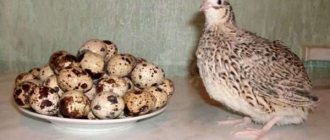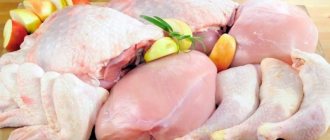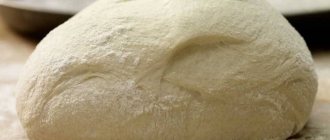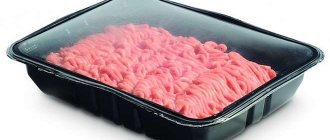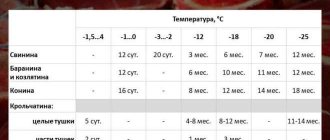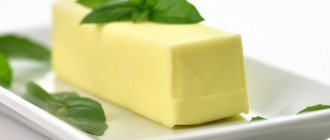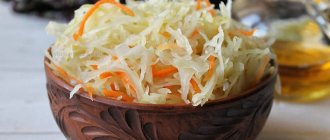In winter, you just want to treat yourself to delicious twists that were prepared for future use in the summer and fall. If you love such delicacies, we recommend that you prepare rolled up fried mushrooms. Rest assured: this aromatic snack will not leave your family and guests indifferent. To have something to make twists from, you need to hurry into the forest and collect more mushrooms.
Mushrooms for the winter Sorry, there are no surveys available at this time.
Fat serves as a preservative for mushroom preparation. It can be butter, lard, vegetable lard. You can also use a mixture of fats - twists with this ingredient are more tasty.
Should you boil mushrooms before frying or not?
If you have just decided to master the preparation of such a preparation, you may be faced with the question of whether it is worth boiling the mushrooms before frying. Many housewives do not neglect double heat treatment. Let's look at which mushrooms must be subjected to this process and which ones should not.
Boil mushrooms before frying
Fried mushrooms
Additional heat treatment of edible mushrooms will not affect health in any way. However, boiling reduces their nutritional value and worsens their taste. Moreover, some of them can become slippery even after boiling for a short time.
Fried mushrooms
Sorry, there are no surveys available at this time.
Storage tips
To keep mushrooms longer, you should:
- Keep fresh mushrooms packaged and not washed, otherwise they will begin to darken.
- Ventilate the mushrooms periodically and check for condensation.
- It is recommended to store champignons in a paper bag rather than a plastic bag.
- To freeze, arrange mushrooms in portions. Small ones are frozen whole, large ones are cut.
With proper storage organization, mushrooms will not begin to rot and deteriorate ahead of time.
It’s very nice to open a jar of prepared fried mushrooms in winter and then cook a delicious dinner for your family. The indescribable mushroom aroma, which was preserved in jars along with fried mushrooms, spreads throughout the house. During the mushroom season, many housewives massively stock up on fried mushrooms for the winter. We will discuss below how to preserve such preparations and the shelf life in refrigerators and freezers.
Must be boiled
As for conditionally edible mushrooms, they need to be boiled before frying. This way you can reduce toxicity to a safe level and get rid of the acrid aftertaste. The thing is that the toxic substances present in such mushrooms dissolve in water when heated. It is, of course, drained, and the mushrooms are eaten.
- The following must be boiled: ordinary stitches;
- pink waves;
- brittle and stinging russula;
- milk mushrooms are black and yellow.
Due to the bitter taste, mushrooms that have a burning milky juice are soaked and boiled:
- camphor, alder and sweetish laticifers;
- bitters;
- violins;
- earrings;
- white loading pads;
- some varieties of russula, pigs and talkers;
- fires, etc.
Fried mushrooms with pre-boiling
So, if you still decide to boil mushrooms, let's look at how best to do it.
Fried mushrooms with pre-boiling
Step One: Cleaning
Soak fresh mushrooms in cold salted water for 1.5-2 hours. Rinse them, get to cleaning.
Advice. If you use boletus or honey mushrooms for preparation, you need to take into account that when frying they turn out to be a little tough, so these parts should be cut off and sent to dry in the winter; they will make a delicious mushroom soup or sauce.
Step two: first boiling
Fill the pan with mushrooms with cold water, let them boil and do not remove from heat for about 15 minutes. Skim off the foam from them periodically. Drain them in a colander and rinse with clean water.
Fill the pan with mushrooms with cold water
Advice. If you choose porcini mushrooms for twisting, add a pinch of citric acid (3 g per 1 liter of water) to the water. This substance will prevent them from darkening during heat treatment.
Step three: second boiling
Pour clean water over the mushrooms, bring to a boil again and cook for no longer than 10-15 minutes. Drain the water, do not forget to rinse the mushrooms.
Step four: frying mushrooms
As soon as the water has drained, chop the mushrooms and place them in a frying pan (do not add vegetable oil). Keep them on low heat, stir every 4-5 minutes. As soon as all the liquid has evaporated, pour in vegetable oil or add butter or animal fat.
Fry the mushrooms for half an hour, stirring occasionally. 5 minutes before the end of frying, add salt and pepper.
Step five: placing fried mushrooms in jars
Place the mushrooms in dry jars that have been previously sterilized. Do not fill the container to the top; leave 1-1.5 cm for fat. The fat in which the mushrooms were fried is suitable as a filling. If there is not enough of it, add it to the frying pan, heat it and pour it into the jars while hot.
Layering fried mushrooms in jars
Advice. If you chose animal fat for the twist, salt its layer immediately after filling the jar.
Step six: sterilization
After the jars are filled, roll them up and send them to be sterilized (immerse completely in salt water). Sterilization duration is 1 hour. Next, you will have to turn them over onto the lids and wrap them in a blanket. You can unwind the twists after 48 hours.
Advice. If you intend to keep the workpiece in the refrigerator, you do not have to subject it to the sterilization process; it will be enough to store it under nylon covers.
Recommendations
Basic recommendations to extend the shelf life of inventories:
- Initially, you should prepare the raw materials. Check for insects and worms. To do this, immerse the workpieces in a container with salt water for several hours. If there are worms inside, a saline solution will help get rid of them.
- After rinsing, dry the product by placing it on a paper towel.
- Place the dried raw materials in appropriate containers that do not impede air circulation. It is better to avoid plastic bags due to the risk of mold formation.
- There is no need to wash it before drying. Just carefully remove dirt with a cloth made from natural fabrics or a knife.
- Choose the largest and strongest specimens - they will last longer and can be cut for convenience.
- The storage place should be cool and dark (not higher than 20°C, avoid penetration of direct sunlight and temperature changes).
- Aluminum cookware is not suitable for storing supplies, as it accelerates the oxidation process.
- When freezing, label the package and note the date and time.
- Periodically sort through dried items and throw away those that are unusable.
- You should not place products with a strong odor next to the mushrooms; they can absorb it.
Delicious recipes
We bring to your attention several recipes for mushroom appetizers that will not leave you indifferent. Fried chanterelles
Prepare:
- fresh chanterelles 1 kg;
- vegetable oil 120 ml;
- bay leaf several leaves;
- salt.
Start cooking:
- Wash the chanterelles and cut them into pieces. You can fry them in either vegetable or butter. You can use lard or a mixture of fats for this. Roast them for 40 minutes. Don't turn up the heat. Be sure to cover with a lid.
- Remove the lids, add salt and bay leaf. Continue frying over low heat until the juice has evaporated and the mushrooms themselves have turned golden brown.
- Place them in hot jars, add oil to the top so that it covers them by 1 cm.
- Sterilize jars in salt water for 1 hour). Roll up and turn over onto lids. Wrap it in a blanket or blanket and leave it like that until it cools completely.
- After 48 hours, you can move the container to a dark place.
Preparations for the winter
You can enjoy the taste of mushrooms not only during their picking season, but throughout the year. To do this, it is enough to make preparations for the winter from them. There are certain tips and tricks for canning:
- It is advisable to blanch the product for 5-10 minutes before cooking;
- fry in enough oil;
- Place mushrooms tightly in clean jars;
- fill completely with any type of fat, so that there is a layer of at least 1 cm on top;
- sterilize for about an hour;
- close the lid tightly;
- place in a cool, dark place.
Canned products will retain all their properties and qualities for 6 months. Outside the refrigerator, shelf life is significantly reduced.
Each freshly prepared dish is filled with vitamins, minerals and microelements. Proper storage, preparation and compliance with all norms and rules will help you enjoy the taste. It is worth remembering that mushroom poisoning is the most dangerous, therefore, at the slightest suspicion that a dish is spoiled, you should throw it away and not risk your health, and in some cases, life.
Fried champignons
Champignon twist can be prepared at any time of the year. In the fall, you have the chance to collect them yourself, recycle them, or place them in tight bags and store them in the freezer. If you are not a mushroom picker, you can buy them in the store - they are on sale all year round.
Fried champignons
Video: a competent way to clean and store champignons
In this article, a lot has already been written on the topic of how to keep champignons fresh and for how long they can be put in the refrigerator so that they do not spoil. Therefore, to summarize this large amount of information, I recommend watching a video on how to clean and store champignons in the refrigerator. The author summarizes everything that was written above. But he also adds some new and useful information. Especially a lot of new things are told in the block about cleaning champignons. Therefore, turn on the video and learn how to clean and store champignons correctly. Enjoy watching!
Storing fried mushrooms
The ideal place to store mushroom snacks is a basement, cellar or refrigerator. If you seal the jars with plastic lids, the shelf life of the snack will be no more than six months; jars sealed with metal lids can be stored longer.
Important! Botulism can develop in products that are stored under lids, so you need to take care and do everything to protect yourself from such a toxic-infectious disease.
You can store fried mushrooms in the freezer. It is necessary to fry them, cool, place in plastic containers or special bags, allow excess air to escape and place in the freezer. In this form, they are stored longer and eliminate the risk of botulism infection.
How to determine and what to do with delays
In order to distinguish a high-quality fresh product from an unsuitable one for food, you need to know the following points:
- Smell. Natural mushrooms have a light earthy flavor. If the product smells of vinegar, acid, rot, or has other too strong notes, it is better not to use it in cooking.
- Appearance. A slimy, sticky surface of the cap or stem, and significant darkening are characteristic of the stage of decay.
- Consistency. Most mushrooms should be elastic, slightly hard, without signs of mold or decomposition.
- When buying factory products, you need to pay attention to the harvest date and expiration date. Choose packaging with the freshest contents without deformation or rupture of the container.
- Check dried products for the presence of insects and worms.
- Canned mushrooms with cloudy brine should be discarded.
If there is any suspicion of freshness, the product should be thrown away without regret.
Useful tips from summer residents
- The mushrooms that you fry for the winter should be completely covered with vegetable oil or any other fat.
- Regardless of what kind of mushrooms you cook, always salt them at the end of frying.
- If you boiled them or soaked them in water before cooking, they need to be allowed to dry. To do this, you can use paper or fabric napkins.
- If you have several types of mushrooms at your disposal, sort them and fry them separately.
- Clean the oil before washing until the cap is dry and non-slippery.
- If you pour ghee on the mushrooms, they may soon acquire a bitter taste. This will not happen with lard filling.
- Frying mushrooms can be done in a slow cooker.
Fried mushrooms are a delicious dish that is prepared in many families. If you want to replenish your piggy bank with interesting recipes, you should definitely try making the above twists. Bon appetit!
Shelf life according to GOST
GOST is a normative act that formulates the basic requirements for product quality, conditions of storage, transportation, etc.
The terms and storage conditions for champignons are stated in GOST 31916-2012 “Mushrooms. Cultivated fresh champignons” and GOST R 54677-2011 “Canned food. Mushrooms, marinated, salted, boiled.”
Fresh
GOST 31916-2012 contains requirements for quality, conditions of collection and storage, as well as packaging and transportation of fresh champignons, compliance with which guarantees the quality and safety of mushroom products.
A high-quality champignon is a mushroom of uniform white, cream, or brownish-brown color (depending on the variety), consisting of a hemispherical cap covered with brownish fibrous scales and a white stalk. The body of the mushroom should be:
- elastic;
- without mechanical damage;
- without traces of moisture;
- without signs of putrefactive processes;
- without any unpleasant foreign odor.
Any deviation from the listed characteristics is a reason to think about the quality and freshness of the champignon.
Fresh champignons are a perishable product. Their shelf life, even if all requirements are met, should not exceed:
- 5 days at a temperature of 0C-+2C and air humidity of 90%;
- 3 days at a temperature of +5C and air humidity 90%.
An air humidity level of 90% is the best option for fresh champignons: lower humidity provokes withering and loss of elasticity of the mushrooms, higher humidity causes a change in their color and the formation of mucus on their surface.
Packing champignons in polystyrene trays sealed in plastic film increases the shelf life of the mushrooms by creating an appropriate gas-air environment inside.
Information about the name of the product, manufacturer, date of collection and packaging, as well as expiration date and storage conditions must be contained in the markings applied to the shipping container with non-toxic, indelible paint.
Canned
GOST R 54677-2011 contains the following information:
- types of canned mushrooms (pickled, boiled, salted; whole and cut);
- a list of mushrooms suitable for such types of preservation, including champignons (find out about the shelf life and storage conditions of various types of mushrooms here);
- technical requirements for the production of canning (including indicating acceptable types of raw materials used for canning);
- requirements for packaging of mushroom products.
On the issue of transportation and storage conditions for mushroom products, the regulatory document refers to GOST 13799-2016, according to which canned food, including mushrooms, should be stored in a well-ventilated area at a relative humidity of 75%. The storage temperature and shelf life of canned mushrooms are set by the manufacturer.
Each package of canned champignons must contain a label that determines the shelf life of the product. As a rule, this is the inscription on the lid or label “Best before” and six numbers: the first two are the date, the middle two are the month, the last are the year.
